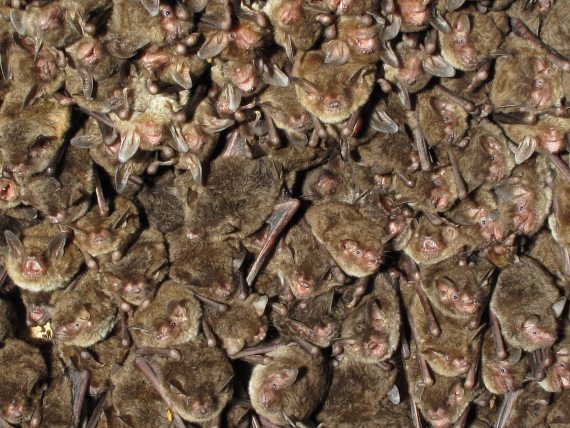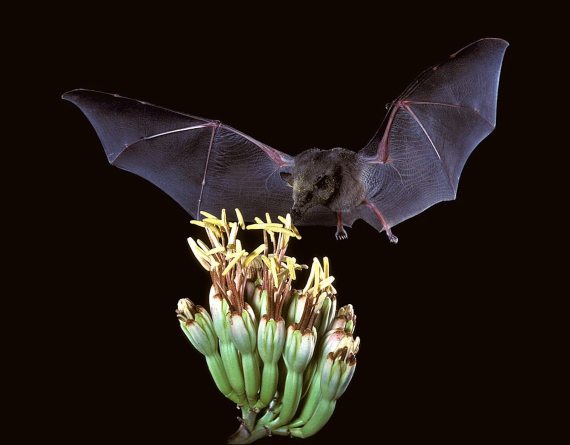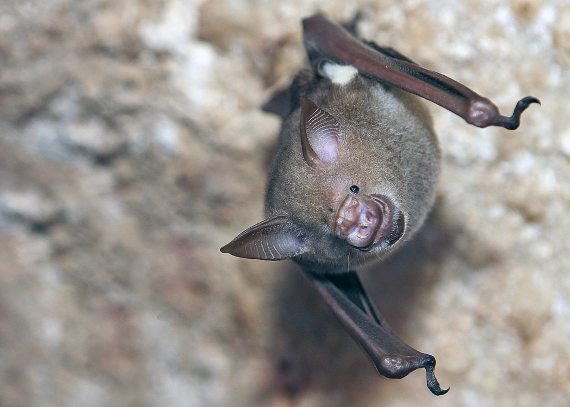First it was rabies, the pathogen that escaped Louis Pasteur‘s attention under the microscope and led him to imagine the existence of infectious agents smaller than bacteria. More recently it has been Ebola, Marburg, Hendra, Nipah, the Severe Acute Respiratory Syndrome virus (SARS), the Middle East Respiratory Syndrome virus (MERS) and, of course, the SARS-CoV-2 coronavirus of COVID-19. All these viruses have something in common: they are supposed to have come into existence in bats and ended up reaching humans. Nearly 11,000 types of viruses are already known in bats, almost 3,800 of which are coronaviruses. But are they merely victims of a bad press or do these animals really have something special that makes them virus incubators? And if so, how do they survive?

Bats are animals of remarkable evolutionary success, as shown by the fact that they form the second most abundant order of mammals after rodents; with over 1,400 species, one in five known mammals is a bat. And they all share one obvious peculiarity: they fly. This ability has allowed them to spread across every continent except Antarctica. But despite the fact that “live fast, die young” is also a law of nature, since animals with a higher metabolism tend to accumulate oxidative damage that reduces their longevity, bats are somehow able to keep reactive molecules such free radicals at bay; while a mouse can aspire to a long life of two years, some species of bats are known to live more than 30 years.
In these peculiarities could lie some of the keys that explain the amazing capacity of bats to coexist with an enormous diversity of viruses without succumbing in the process, a relationship with their pathogens they have maintained over millions of years of evolution. Scientists suggest that the rapid metabolism of bats keeps them in a feverish state that includes a beneficial immune response, more active than normal.
An innate super-immunity
Some of this immune hyperactivity has been demonstrated by the discovery in bats of the permanent presence of interferon-alpha, one of the antivirals found in all animals. Interestingly, although bats only possess three types of interferon-alpha, a quarter of what humans have, they make more intensive use of them; while we only produce interferon-alpha in the case of an infection, bats have these antivirals constantly deployed, which may be linked to “the ability of bats to coexist with viruses in the absence of disease,” wrote the authors of the study.
For Benjamin Neuman, an emerging virus specialist at Texas A&M University, this innate super-immunity of bats could largely explain not only how these animals tolerate viral infections, but also why their viruses are more harmful to other species. “SARS-CoV-2 isn’t so much an inherently dangerous virus — it is dangerous in humans because it is well adapted for bats or other animals with a very strong interferon system,” he explains to OpenMind. According to Neuman, the balance favoured by natural selection between the virus and its host does not completely shut down the host’s immune response, but rather keeps it at a low level, sufficient for the virus to persist. “The danger from SARS-CoV-2 comes because the virus carries enough genetic equipment to be able to calm down but not completely stop a bat’s supercharged interferon system — when the virus is in a person, that same equipment totally overwhelms our interferon system, and so we can get sick from the virus. (…) It’s sort of like sending a middle-of-the-pack heavyweight boxer into a flyweight boxing match. The outcome is about what you would expect.”

A crucial feature of this balance between bats and their viruses is that these animals are capable of maintaining this hyperimmunity without harming themselves; in many other animals the inflammatory reaction caused by this permanent innate response would be harmful. A recent study has analysed in detail the genomes of six species of bats, discovering that, in addition to showing an expansion in certain antiviral genes, they lack others that promote inflammation.
“I believe it is an adaptation to flight,” confirms the co-director of the study Emma Teeling, a specialist in molecular evolution and genetics of bats at University College Dublin, to OpenMind. “Given the high metabolic requirements of flight and the high levels of damaging free radicals that occur as a result, bats have had to evolve a unique immune system to quickly dampen the constant inflammation they experience due to the cellular damage induced.” Thus, continues Teeling, this clever strategy also serves them to respond against pathogens, which explains their tolerance and longevity.
Dangerous viruses in other species
Nevertheless, some researchers disagree with the idea that bats harbour a greater number of viruses with zoonotic potential than other species. At the University of Glasgow, specialists in viral ecology Nardus Mollentze and Daniel Streicker have studied the presence of infectious viruses for humans in different animals, concluding that there are no “special reservoirs”; viruses dangerous to us are uniformly distributed among different species, whether bats, rodents or birds. “The variation in the frequency of zoonoses among animal orders can be explained without invoking special ecological or immunological relationships between hosts and viruses,” they conclude in their study.
“The recent work on bat immunity is fascinating,” Streicker told OpenMind. However, he clarifies, the extent to which these responses are widespread among bats and what their effects on viruses are has not been demonstrated. “There is currently no evidence that any traits unique to bats have led to either bats hosting more viruses per species, or to bat viruses being more likely to infect humans,” adds Mollentze. “Whether the presumed unique ways in which bats deal with infection have altered their virome in other important ways remains to be seen.”

Both scientists admit that sometimes the same virus is more dangerous for humans than for bats, but they emphasise that it remains to be demonstrated whether this pathogen has originated in these animals and to what extent this different virulence would be shaped by its origin. In fact, adds Streicker, bats are neither invulnerable to all their viral infections, nor are they the only healthy hosts of viruses potentially fatal to humans; there are other viruses dangerous to us that barely harm their respective reservoirs, birds or rodents, such as West Nile, Eastern equine encephalitis, Hantavirus or Lassa. “Most animals in nature are simultaneously infected with multiple viruses, most of which cause limited clinical disease,” Streicker concludes. “Whether the proportion of these is lower in bats compared to other animal groups is unknown.”
Regardless of these unknowns, Mollentze and Streicker’s work not only draws attention to the need to monitor other animal reservoirs, but should also serve to lift the stigma that has been placed on bats as a public enemy. As to whether viruses jumping to humans are rare cases of a “perfect storm” or occur more frequently than we suspect, although usually without consequences, there seems to be no unanimity among researchers. But if there is one culprit in such events, it is us for invading their habitats. As emerging infectious disease specialist Linfa Wang of the National University of Singapore says, “bats have many unique biological features such as long lifespan and lower cancer rate; we have a lot to learn from them.”
Javier Yanes
@yanes68
Comments on this publication